After I completed the bluelist in 2009, I got bored, so ended up writing a 2nd bluelist.
The recession bit hard on a lot of people. Although I continued to travel, I mainly did shorter trips and nearer to home, like the former Yugoslavia and places in Europe I hadn’t been.
After last years financial successes from the office move, I decided it was time to get back to a long hall tour.
Cuba was on the 2nd bluelist, and as Nikki hadn’t been there either, it seemed the ideal destination.
Cuba is sometimes described as “The US through a broken mirror”. In this picture, I’m standing on front of the capital building in Havana, which is a replica of the one in Washington, only 30m taller, and covered in scaffolding.
Planning is essential on any trip (just get there and go where the mood takes you, is for students with 6 months off, or retiree’s with plenty of money). I used DK Eyewitness guide as usual, but an informative book called Slow Train to Guantanamo (which has nothing to do with Guantanamo bay and the war on terror).
I’d spoken to many people who’d visited Cuba (it seemed much more popular than I’d expected). I was a bit suprised, as most them werent what I’d call adventure travellers.
Then I realised why. Most of them had been there on an all inclusive beach holiday.
My intention was to tour the island and see the real Cuba. Explore run a tour, that visits the entire place over 15 days.
We booked private accommodation in Havana for 2 additional days so we could relax before coming home.
As most people know, there was a revolution in Cuba in the late 50’s. As a result, the US wanted nothing to do with a communist country (a feeling they still have today) and implemented an embargo.
As a result, although Cuba is a poor socialist country, even if they had something the world wanted and plenty of cash, they’d still struggle to get hold of the type of routine stuff that would allow things like this building to be repaired.
That said, all over the country, improvement work was being done, albeit slowly.
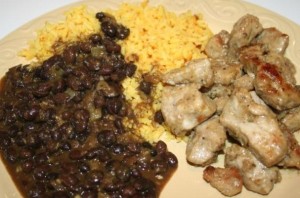
One thing about Cuba that has to be mentioned is the food. Its awful.
Although they grow chilli’s and stuff like that, they dont seem to use it, so the food is mundane to say the least.
After a few days, a bowl of porridge from our staff canteen at home would have, in comparison, tasted like the hottest curry I’d ever eaten 🙂
You generally get chicken or pork grilled, some rice and some black beans, and that’s it.
Because food is hard to come by in Cuba, local proprietors are obsessed with the quantity of the food. They don’t seem to get the idea, sometimes a smaller amount of higher quality would be just what the customer wants.
For days when we were on the road there were cheese and ham sandwiches. All of it ludicrously overpriced, but more about that later.
We arrive in Havana the night before the start of the tour. After checking in to our hotel, we have a wander around and get a couple of drinks.
In the morning, it’s breakfast and then the tour brief. It still amazes me, that weeks after receiving the trip confirmation and documentation, this event always takes ages.
People start asking if they can pay the tip kitty in £ sterling. Others have to go back to their rooms to get travel insurance documents. More than half the people on the trip did this, and the other half, having done the right thing themselves, had to sit through this inconvenience.
Anyway, we had a tour around the town in baking heat, then popped into Havana Club Rum museum.
In the old days, I would have put up about 25 photo’s for each individual place that we visited in Cuba (so 25 photo’s just for Havana). On this occasion, I’ve tried to capture the entire trip in 44 photo’s over 2 blog posts.
After the walking tour of the old town, we jump on our coach (a superb Chinese manufactured thing that was comfortable, air conditioned and had a dvd player so we could watch documentaries during long journeys).
Revolution Plaza is massive (this is a view across it). Our guide started talking about Fidel (strange I thought, when I talk about the prime minister of the UK, I dont refer to him as “David”). Also, I noticed that his name was pronounced as Feedell.
Although many in the west see Castro as a tin pot dictator, and a bit of a joke, in Cuba he is very highly regarded. This square can hold over 1 million people. On one occasion, Castro got up to address them. He got a bit carried away, and kept on speaking (I know how that feels).
In his case, he carried on speaking, for 7 hours, and the audience largely remained where they were and applauded.
With his face covering the entire interior ministry on the left, is a picture of Che Gavara. On the right, a picture of Camilo Cienfuegos, slightly lesser known, but Castro’s right hand man during the revolution. At that distance, I couldn’t help thinking he looked like the Ayatollah Homeni.
Next day, we head out towards the Bay of Pigs.
We had a toilet stop and some coffee at something described as a Zoo. It’s no match for Chester Zoo, here in this cage are domestic pigeons !.
A while later, we stop off and some of us go swimming (and the smart ones, remain in the bar).
There wasn’t actually a bay as such to visit, most of the battle took place in a forest.
We visited a small museum at Giron (the Cubans dont call it the Bay of Pigs).
There were lots of weapons and stuff (once the battle was over, the Cubans were able to liberate a great deal of modern weaponry, otherwise denied to them.
They also captured hundreds of prisoners, who they later traded for 50m worth of medical supplies.
They also had lots of stuff about the people who’d died and the corruption of “The Yankee’s”.
I dont normally shy away from contentious issues, but with something like this, the most reliable source I know is the BBC, so read this, if you want to find out what happened, without the whole “blood on the hands of the Americans” type thing.
Accommodation throughout the trip was varied.
Sometimes we stayed in beautiful places like this in Santa Domingo when we trekked to Castro’s hideout in the mountains (but for the first 2 hours after we arrived, there was no hot water for a shower).
Our accommodation in Camaguey, looked (and felt) like a prison, but at least had air conditioning.
We didn’t stay here, but visited it on a motorway stop.
A communist era hotel. Garish design and decoration, pool filled with plankton and the entire place smelled of urine.
During the communist era, every 2 years, families got to stay in a hotel like this and have the novelty of being waited on for food and drinks. It also had a tennis court.
The only minor thing, was it wasn’t actually near anything. The nearest beach was 100 miles away, and no countryside or mountains nearby. It was just a Brutalist style hotel in the middle of nowhere.
One of the things I really wanted to see, was American cars.
Its said that the mechanics in Cuba are some of the best in the world. The reason:
Well, for a long time, the newest car they had was a 1956 Chevvi. Today, it isn’t just the embargo for spare parts that causes a problem. The spare parts for these cars haven’t been made in over 50 years. The Cubans are adept at making there own spares with simple tools.
Our first evening in Trinidad , we had dinner in a Poladare (I’ll explain later) part of the evening, was that the proprietor would send a fleet of old American cars to pick us up.
Today, most of them have been converted to Mitsubishi diesel engines, but the driving experience in one of these, harks back to the golden age of motoring.
The following day, we have a walking tour of Trinidad. We saw many interesting things including the Casa de Alderman Ortiz, a fascinating contemporary art gallery. I also learned 2 things about Cuba that had previously puzzled me.
1. There are no indigenous Cubans. They died out, when Cuba was first colonised. Cuba’s culture is a mixture of European and African, which melds rather well, and explain the strong musical influences within the country.
2. Just about every place in Cuba, apart from Havana is named after a city in another country (Trinidad, Santiago and they even had Australia).
We get the chance to visit a government shop. Its a controlled economy, and as you can see, supplies and variety are limited.
One advantage, is that everyone in the country gets a ration book, and gets free rice and basic supplies.
Younger people are embracing the free market, but they worry about older people getting left behind.
Two initiatives that the government have “enabled” are Cassa particular and Paladar’s.
A Cassa allows a Cuban to let out a room or rooms in there home and charge rent.
A Paladar allows a Cuban to serve food in a room in their home.
The idea is to provide variety and quality for tourist from owner managed businesses, while generating badly needed currency for the country.
The reality is, our tour guides frequently took us to paladar’s, where we found later the prices had been significantly inflated (we never saw a menu). Turns out, government hotels don’t give kickbacks to tour guides, and paladar’s do.
At points in the trip, it became ridiculous, when on an all day drive, we drove an hour out of our way for over priced cheese sandwiches (they were more expensive than the same sandwiches at the Hotel Nacional !)
By the end of the trip, we were a bit sick of it (the rip off I mean, not the sandwiches). The daft thing is, the actual people on the street, shop keepers and bar staff of Cuba were very laid back and with the odd exception not predatory at all.
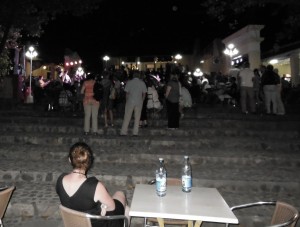
In the evening, live entertainment, in the open air.
Music is a common part of Cuban life and featured frequently during the trip.
On a lot of occasions, it was 3 blokes playing for loose change when you were eating your dinner.
On this occasion, we went to a massive open air music and dance festival, with lots of innovative tunes and experimental styles.
A few people asked where the Buena Vista social club which featured in the film was (actually, this happened in Havana anyway !). The reality, Jazz music isn’t normally played in bands. Its perfectly possible that a cornet player will play with 4 different bands and just get together to Jam.
A few places advertised themselves as the Buena Vista social club, but we were told they were tourist traps and too avoid them.
In the morning we wake in our beautiful chalets in splendidly kept grounds and tuck into our horrible breakfast.
Shortly afterwards, our carriage awaits.
Its an old Russian truck, which is used to transport people to Topes de Collantes, the largest national park in Cuba.
There are 4 must do walks in “Topes”. We would do all of them, and spend 2 nights in the jungle. Some people carried a bit more stuff than they needed which left little room in the back for comfort.
That said, racing through the mountains in the truck, with the wind blowing in my hair was one of the highlights of the trip.
We leave the truck, and set off trekking (the truck took our bags to our overnight accommodation). The heat was unbearable, but it was great to be back in the jungle again.
Some of the other people on the trip, seemed to be struggling with their fitness. I had to explain several times, as a seasoned walker, that there isn’t any rush, and were supposed to be enjoying it.
We see various farms along with way and places where coffee is grown wild. We arrive at our accommodation (and obviously, I have a can of Cristal, far superior to Bucanero, which tastes like paint !).
It’s basically, a veranda with tables. We have lunch here, and then realise that once we’ve had our evening meal later, well have to move the tables and sleep on the floor. But that’s for later.
We head off on another walk, to a small lake, where those without common sense can go for a swim. There is a waterfall a short walk away (Salto del Caurni), but I’m lost in the moment.
Sat in the shade in the jungle, I find a spot away from everyone and do the sit spot thing I’ve been taught on bushcraft tracking courses. I’m in a contemplative mood.
We wander back to the camp. Its an hour before dinner so I sit by the river with a can (and subsequent cans) of Cristal lager.
Food is the usual mediocre nonsense, but good company, humorous and informed conversation and more Cristal (and mohito’s seemingly for everyone else) make up for it.
Time for bed, and we have mats to sleep on (the kind, people of my age used to do PE on). I’m a bit miffed that a French group have arrived and nabbed all the optional tents, which seems a bit selfish.
I remember the farmers wife in the French Alps some years ago, who showed us such kindness for absolutely no personal gain. Does the “tent takeover” really matter after all.
Well maybe… Insects bite the hell out of me through the night despite practically bathing in jungle formula deet and I get no sleep.
A pretty bobbins night overall, but this is adventure, there’s no time for mincing around complaining about things on the periphery.
And so we head off, on 3rd of our walks. On the way, is this amazing scene. I beheaded snake. It still seemed to be moving. There was some debate about whether it was death throes, or actually something the snake had eaten inside.
Like most sensible “proper” travellers I seek out adventure, prefer low key and don’t boast of my adventures.
But just for once, how many people who holiday in Ibitha have trekked and slept out in the jungle, and seen something like this.
In the morning, its get ready and have breakfast (Why god why ?. Even the coffee is awful, and they export this crap all over the world, so that others can suffer along with them).
We do a different trek this time including crossing a river on this Bridge. Brunnel would have been envious. We trek to the Batata cave and see its underground river.
On the left of the picture is Carol, from New Zealand, a fab girl, and in the middle, Sam, who harks from my home town of Manchester, and a fan of City like my brother David and friend Frank.
On the right is a Church of England priest called Jane. I don’t go in for religion much, but although opinionated, she had 5 degrees and there was no doubt of her informed travel knowledge. Two couples on the trip from Australia. Don’t need to say any-more, if you’ve spent any time on this site you know I love Australia and Australians.
At this point, I should point something out. I could put loads of stuff up here about local plant life, the route we walked and things like that. The truth is, you can find that out, anywhere on the internet these days (or just ring Explore).
This is johnsunter.com, the adventures of an ordinary person. I’m writing about the sort of experiences an ordinary person would have on this trip, which I think is quite unique.
We arrive around lunchtime, where we’ll be staying for dinner/overnight. A working farm which subsidises it’s income by offering veranda/camping accommodating.
Our bags are waiting for us, and just like last night, there’s a shower. We get our usual glass of complimentary orange juice on arrival, which is refreshing in the baking heat.
I’m delighted to find that there are tents available. Nikki decides to do the afternoon walk. Exhausted from the heat, I get some rest in our tent, which I’ve furnished with 2 mattresses I had to carry down a big hill in baking heat.
In the evening there’s more bland food, but if I mash chicken, black-beans and rice together its halfway as tasty as a wet shredded version of the Guardian.
I sleep much better that night and in the morning, the truck takes us back to our air conditioned coach.
Quite a long drive (with cheese sandwiches) and we arrive at our destination for the evening Camaguey.
I want to write loads of things about Camaguey about it being unique and exciting, but the truth is, after seeing 3 other “colonial towns” this was just the same.
We were invited on a cyclo tour (Cuba has some innovative forms of transport since 1991, but more about that later). The cyclist looked delighted when Nikki walked over, but when I joined her, he visibly groaned.
Still, if you take money to do a job, you should do it as well as you can, that’s what I always say.
One other thing, was the guy in the photo above. Everywhere we went people seemed to have Union Jack T shirts of one kind of another.
We had dinner later at a buffet restaurant, which was really good.
In the morning, we woke in our prison (sorry, hotel) and wandered around a government shop to buy water. I couldn’t believe it, when they checked our bags.
Did they think there was ANYTHING in that shop I couldn’t afford or would want to steal !.
Were back in the coach, and on the road towards Santiago de Cuba.
On the outskirts, we visit Monkada Baracks.
Its now a school, but on the 26th of July 1953, it was attacked by Castro and some students.
The attack failed. A few of the attackers were killed in action. Those that remained, either went off for trail, or were killed in cold blood, had guns placed in their hands and were described as dead enemy combatants.
Its this kind of tyranny, which led to eventual revolution. Castro, got 13 years in prison (which like Hitler he used to study and formulate his plan). He was released 2 years later.
The walls are said to be scarred with bullet holes from the attack. Yet in 1960 Castro personally drove a bulldozer which destroyed the outer walls.
In 1978 he ordered the wall rebuilt to house a school and museum and interestingly, they now have bullet holes.
We also visited the national cemetery, Cementerio Santa Ifigenia
It has the graves of many revolutionary fighters (quite a few of them, killed in “interventions” in Africa).
They also had 2 members of the Buena Vista social club (fantastic musicians, but not sure how they’re hero’s.
Finally the grave of the Bacardi family (this was confusing, they were disliked by the people before the revolution, got the hell out when it started and funded the training of soldiers for the Bay of Pigs).
There is a 3 person ceremony every half hour, to commemorate the brave fallen with an eternal flame. Reminded me of something similar I’d seen in Russia.
We arrive in Santiago de Cuba.
It’s probably not the hottest place I’ve ever been, but mother of god it felt like it.
We had a few drinks in a rooftop hotel overlooking the square. You probably can’t see, but the building on the top left of the picture is a bank. It had a sign with the time and temperature on it.
Humid heat had been a problem for me throughout the trip, but the sign showed a temperature of 43 degree’s centigrade (for those that didn’t pay attention in science, that’s a bit less than half the boiling point of water, and as a man from Manchester, it was unbearable.
We stayed out of town, and after a debaucle with the tour guides trying to con/press-gang us into visiting “their” Paladare, we made our own way into town for the evening.
We found a really nice rooftop place that evening and had dinner there. The food and service were very good, but I loved the value added.
The Chicken Nikki ordered was “delayed” due to a problem with the stove. As we looked over into the street, a moped appeared, with a plate and cover being carried by the pillion passenger. Suddenly, there was no problem and the Chicken was served 🙂
It’s well known that in some countries, bootleg films are the main staple of entertainment. Our waiter was completely charming, but after the first couple of conversations, I couldn’t help feeling he’d learned English from Lock, Stock and Two Smoking Barrels.
With heavy facial emphasis (he obviously thinks this is how we chat in the UK) – “LISTEN TO ME VERY CAREFULLY ! – Would you like fish or chicken ?” and “YOU’VE GOT AN IMPORTANT DECISION TO MAKE ! – would you like sugar with your coffee or without ?”.
That’s why I travel, when else would you get to experience something like this.
We wandered over (and even went over on the 2nd night as well) to the much talked about Casa de la Trova.
For all the hype, the music was original, and delivered with genuine charisma.
There was a balcony outside where you could get some fresh air, but inside the mood was electric.
Some hired dancers performed but loads of other people got up too.
I’ve often said, I don’t like football, but I love being in a pub when an important match is on. I don’t care who’s playing or the score, but I can feel the atmosphere and energy in the room and this was much the same.
On our free day, we got a taxi to Castillo del Morro. This place was amazing.
I could have taken 100 photographs and not captures it.
Anyway, it took 2 full hours to explore and when the guidebook says worth seeing, I think its a must see.
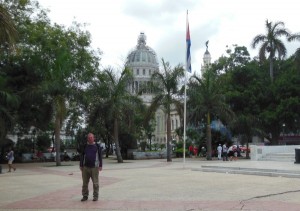
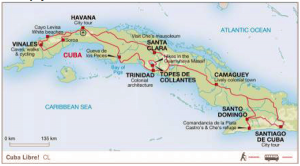
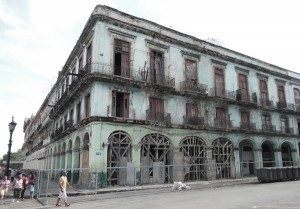
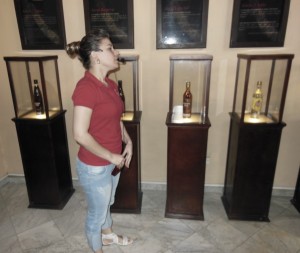
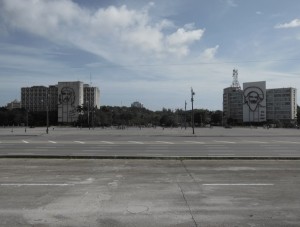
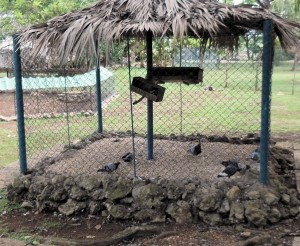
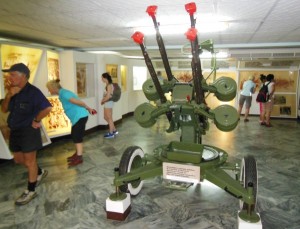
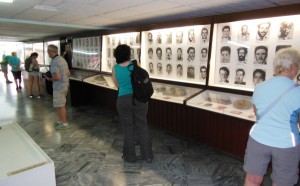
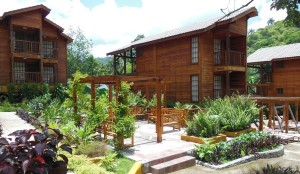
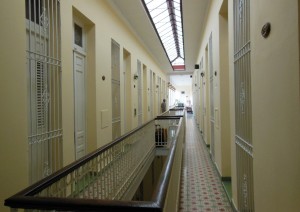

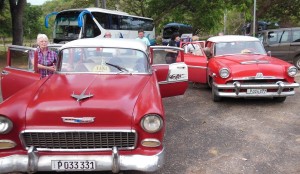
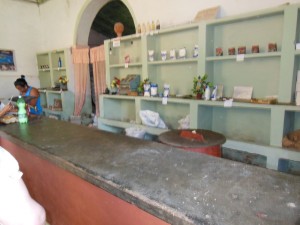
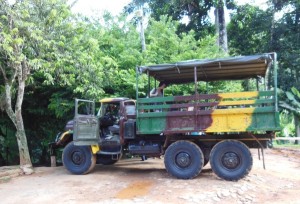
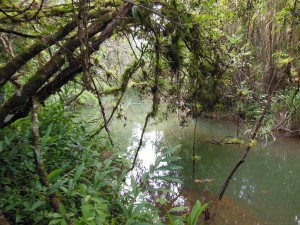
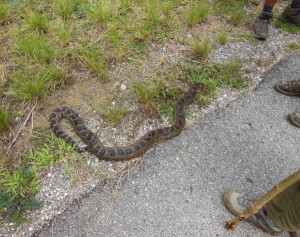
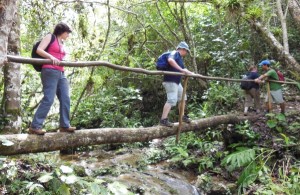
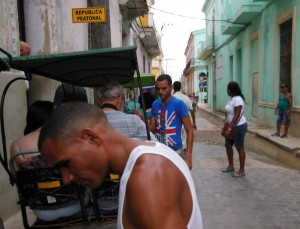
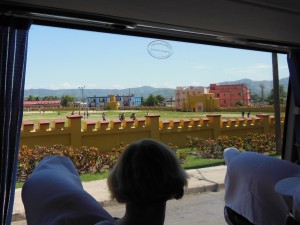
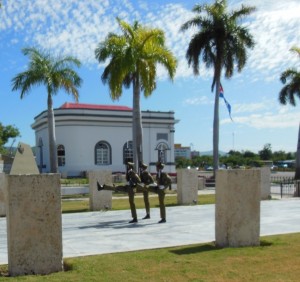
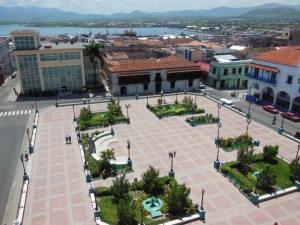
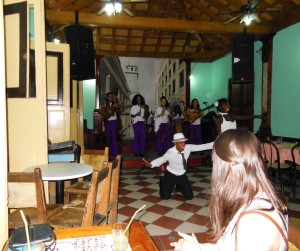
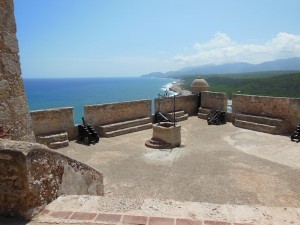
Cristal is one of the only beers that Ive drank for 2 weeks solid and still enjoyed the taste of!